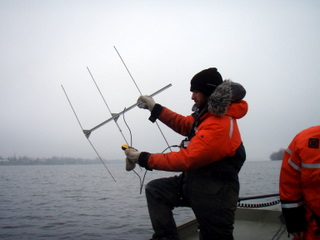
Posts: 2024
| This topic has really bothered me for quite some time, namely because of some of the goofy theories that have arisen surrounding the subject (including but not limited to the stocked-lake only theory...). I did some digging...
The swim bladder is homologous (same evolutionary origin, different function) to the lungs of terrestrial animals (and a handful of fish). The swim bladder contains gases that can come and go. I should add that there are two types of swim bladders: open and closed. Closed is just as it sounds - isolated from the outside of the body. Open, however, means there is a passage-way that connects the bladder with the external environment. This passage-way is known as the pneumatic duct. Shallow-dwelling fish (not to be confused with deep, bottom-dwelling species such groupers) can acquire atmospheric gases through this duct that help regulate their buoyancy.
Can't take much credit for piecing that together. This link should help explain what I'm talking about: http://www.bio.davidson.edu/Courses/anphys/2000/Martin/types.html |


